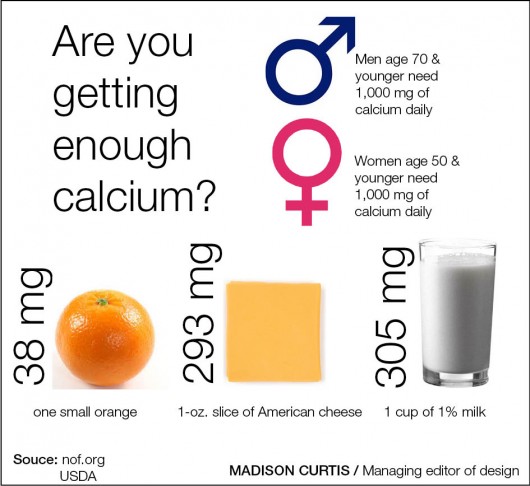One Ohio State initiative is working to move students to consume more dairy.
The #SpotTheCow campaign is back on campus for a year-long run to let students know that dairy is still a beneficial source of calcium and nutrients, even during college.
“The overall goal of this campaign is to try to increase dairy consumption on the Ohio State campus,” said Jamie Seger, #SpotTheCow campaign director.
#SpotTheCow plans to use social media, posters and fliers and interactive activities at campus events to raise student involvement and awareness of the campaign. Those campus events will offer giveaway items such as T-shirts, sunglasses, dairy products and educational pamphlets.
Funding for the campaign was provided through a two-year, $38,720 grant from the American Dairy Association Mideast.
ADA Mideast serves as the Ohio and West Virginia affiliate of the National Dairy Council. It aims to provide nutrition information to producers, consumers and educators, according to the ADA Mideast website.
After a 10-day trial run last year, the campaign team researched student awareness of the campaign. The survey, sent to all OSU students, showed that 31.2 percent of surveyed students were aware of the campaign.
The research concluded that a campus campaign designed to promote dairy calcium has potential to engage college students.
Seger said the campaign stems from a milk-vending research project done by Carolyn Gunther, the principal investigator of the campaign and assistant professor in the Department of Human Sciences.
Gunther’s research focused on an on-campus study to determine how effective vending machines containing milk products are on students’ calcium intake, according to the Education and Human Ecology website.
Andrew Lutz, a representative for the campaign as well as an OSU men’s volleyball player and fifth-year in health promotion, nutrition and exercise science, said the campaign is pushing an important message.
“It is crucial for college students to have dairy in their diet, as it is the most common time to have the greatest decline in consumption,” he said.
The campaign might help freshman, who Gunther said sometimes have a decrease in their quality of diet during their first year at college.
“In the transition from home to campus, college students, particularly freshmen, are vulnerable to experiencing a decrease in diet quality – including dairy and calcium intake,” Gunther said in a released statement.
The campaign has already been at the Student Involvement Fair, Buck-i-Frenzy and the College of Food, Agricultural and Environmental Sciences’ Back2School Bash so far this semester.
The campaign is also set to be at the homecoming parade on Oct. 17, where it will team up with the Buckeye Dairy Club to build a float, Seger said, as well as the Beat Michigan Pep Rally Nov. 24.
Katie Borchers, another campaign representative and fourth-year member of the track team, said the campaign tagline, “Calcium keeps you Moo-ving!” plays a role in her athletic lifestyle.
“I started drinking chocolate milk after every practice because I learned the importance of refueling your body. This allows me to perform at the best level that I can each and every day,” Borchers said.
But not all students are able to consume dairy products.
Jade Werner, a second-year in animal and biomedical sciences, has a minor form of lactose intolerance. She said she still supports the campaign’s goal, however.
“I think that the #SpotTheCow campaign on campus is great because I believe that everyone should start to drink healthier and stop drinking so much soda,” Werner said. “Even though I have a hard time consuming dairy products, those that are lactose intolerant still need to be aware of the calcium intake that we need.”
Research at the end of this campaign will determine if there is any difference between behavior changes compared to last year’s campaign research, and will also look at awareness of the campaign itself, Seger said.



